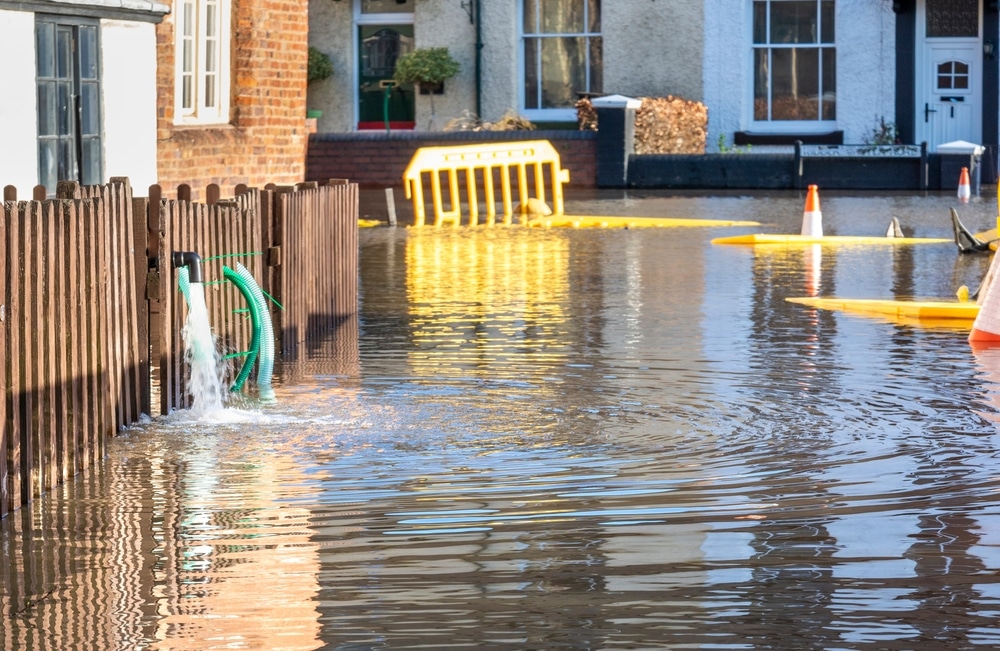When we think about the climate crisis, we typically think of plastic waste, pollution from factories and the number of cars on the road. But how often do we consider the buildings we live and work in every day?
Climate change is a major design problem for the architectural and construction industries right now. The threat that the climate crisis poses is unavoidable, and buildings are a part of the problem in more ways than many of us realise. As any architect will know, buildings consume an average of 40% of global energy and emit over one-third greenhouse gas emissions, so it’s a key area to adapt to mitigate the side effects of construction.
The state of architecture currently
The architecture industry is at a crossroads. It’s simultaneously one of the largest contributors to climate change, yet architects have a unique opportunity to use their skills to design buildings that are more sustainable and resilient to the effects of climate change.
The architecture industry is still in the early stages of its transition to a more sustainable future, but there is growing momentum to adopt greener practices, be it recyclable materials or renewable power. As this movement continues to grow, architects will have an increasingly important role to play in addressing climate change.
With buildings a critical element of our transition to a lower-carbon future, retrofitting is also necessary. In Europe alone, in 2020, over 220 million buildings were energy-inefficient and dependent on fossil fuels for heating and cooling, so we have the opportunity to reduce CO2 emissions with smarter designs.
What challenges do architects face?
Extreme weather events
Architects today face significant challenges in designing sustainable buildings that can withstand extreme weather events exacerbated by climate change. Buildings today need to be able to survive powerful hurricanes, intense storms and increased flooding, and this requires resilient design strategies such as reinforced building structures, elevated foundations and advanced stormwater drainage systems. As architect Kunlé Adeyemi explained to MoMA, “Eighty percent of the world’s major cities are by the coast, but we have yet to develop a way to adapt to floods and encroaching coastlines”.
Despite humans always living by the sea throughout history, we’re now facing unprecedented weather conditions that need to be factored into architectural designs to protect buildings in the future. In addition to needing more innovative design thinking, these measures often require more expensive materials and construction methods. Architects have to find ways of balancing these additional costs while still meeting budgetary constraints.
We also need to consider ways of retrofitting existing buildings to withstand these conditions, something the European Commission is intending to combat with the ‘renovation wave’ initiative, part of the European Green Deal. The goal here is to renovate current structures and promote investment in these efforts. With the increasing frequency and severity of extreme weather events, architects play an important role in developing solutions to create more sustainable and disaster-resilient communities.
The carbon footprint of construction
It’s a given that architects need to reduce the carbon footprint of construction, but it’s not without its unique set of challenges. For one, there’s currently a distinct lack of regulation surrounding sustainable design, as well as a lack of public awareness as to the benefits of this way of constructing buildings.
There are limited regulations in place that require architects to design in a sustainable way, which often means that, due to cost or time constraints, it’s not considered enough. In some jurisdictions, there are voluntary green building programs that architects can participate in, but these programs are not mandatory and therefore few and far between within the industry.
Despite the rise in conscious consumers, public awareness around the environmental impact of construction is low. This can make it difficult for architects to educate their clients about the value of sustainable design and the benefits their designs bring to the planet and the project. Since sustainable materials and technologies can be more expensive than traditional options, this lack of awareness can be a hurdle in encouraging clients to agree to green-inspired designs.
Heatwaves and water scarcity
It’s not just floods and storms that architects need to design around, but the opposite problem of heatwaves and water scarcity. In fact, they’re some of the most pressing environmental challenges architects face today because we’re already experiencing these issues with rising temperatures in the UK and other traditionally temperate countries becoming more intense and widespread.
Heatwaves are forcing architects to design buildings with thermal comfort in mind, which means considering the colour of roofing and walls to reflect light and heat, ventilation strategies and materials that can keep buildings cool in hot weather. But there’s also the social and economic impact of designs, such as how the building will impact the health and wellbeing of occupants and how they’ll affect the environment in terms of resources.
Water scarcity is another issue that architects need to factor into designs. As temperatures rise and water cycles are affected, our access to water diminishes and this means that features such as low-flow plumbing and rainwater collection need to be part of building design to make the most of the resources we have. Architects may also find challenges in the construction of buildings, such as limited wet construction to conserve water.
Current performance and design standards need to evolve into a more holistic approach that supports energy efficiency, the reuse of materials and are designed with the future climate in mind. That may look like buildings which are oriented to make the most of natural shade, those constructed with ventilation strategies that can cope with high temperatures and condensation build-up, or buildings with drought-resistant landscaping.
The industry certainly faces its issues and challenges, but architects can be a crucial weapon in resolving these problems. Innovation is essential to adapting to rising temperatures and extreme weather conditions, and in the coming years, we’re likely to see the industry shifting to meet these needs. But more also needs to be done in terms of public initiatives to renovate existing buildings to make current structures smarter and more eco-friendly.




















